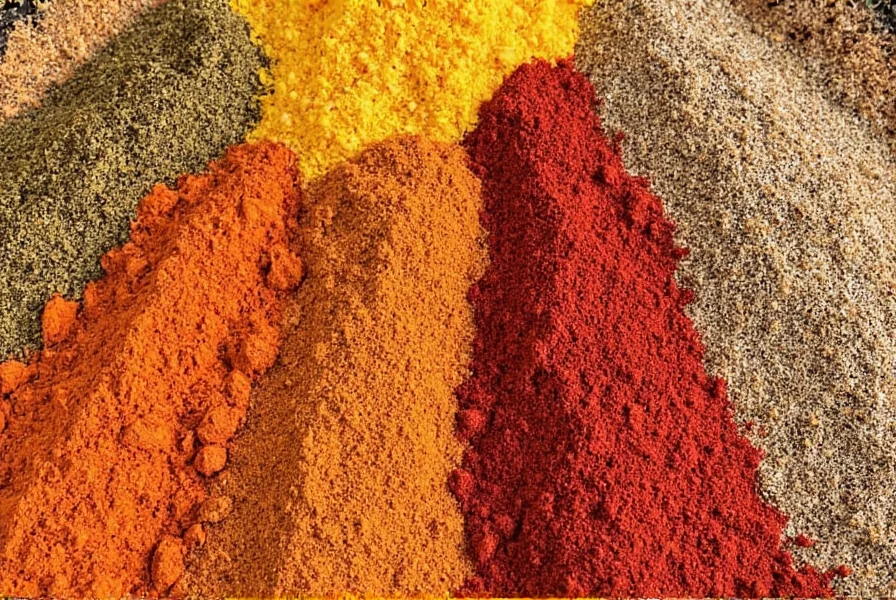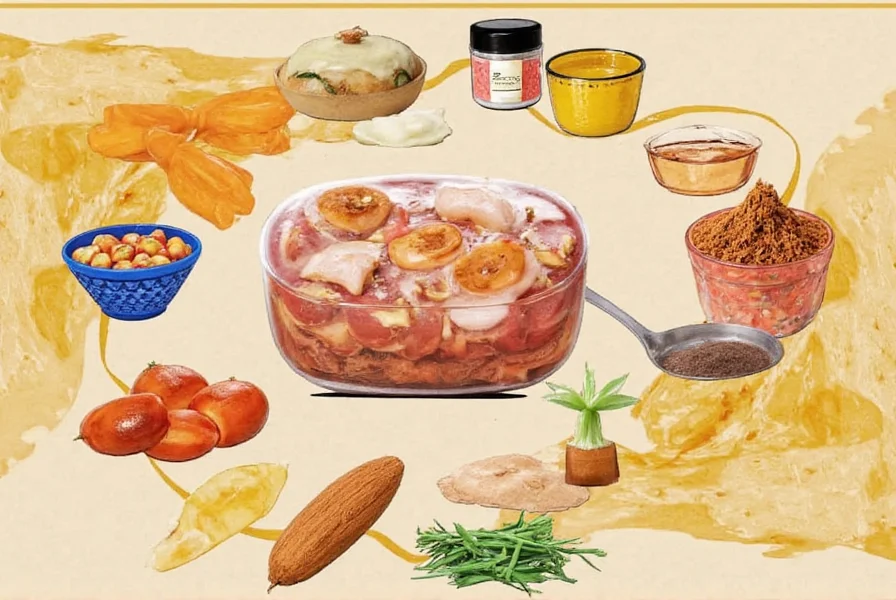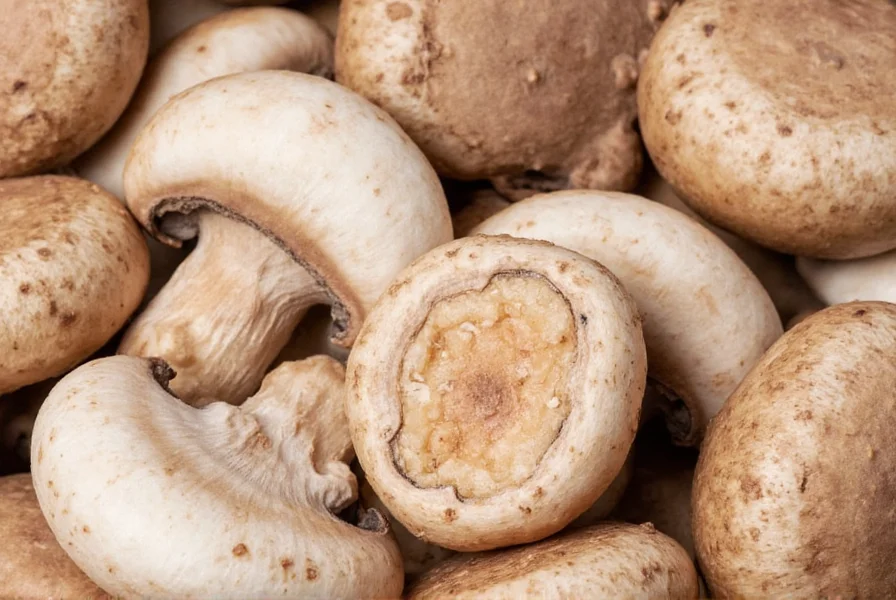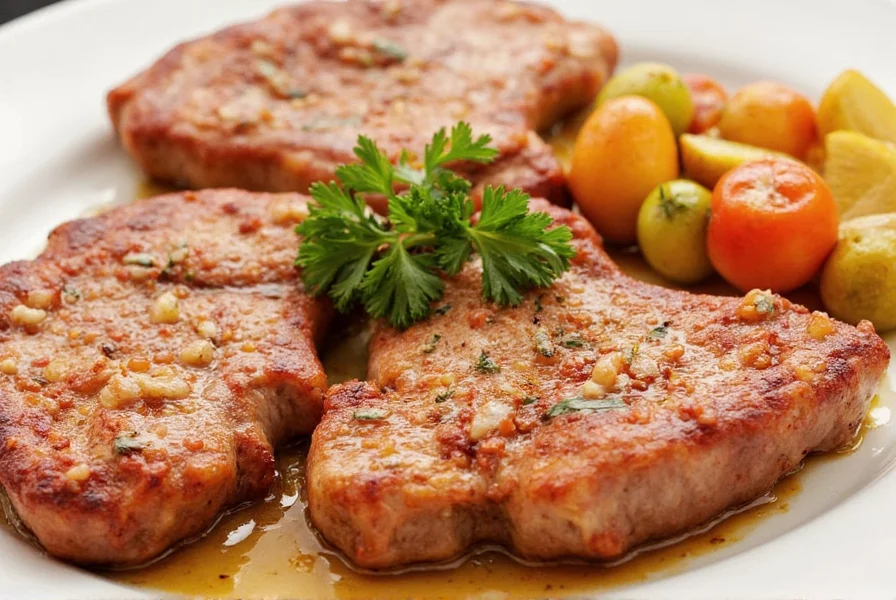Table of Contents
Top 10 Umami-Rich Spices for Cooking
Umami is the fifth taste, discovered by Japanese scientist Kikunae Ikeda in 1908, and it's the secret to making your dishes more flavorful and satisfying. Unlike salt or sweetness, umami delivers a deep, savory richness that enhances all other flavors. In this guide, we'll explore the top 10 umami-rich spices you need in your kitchen, based on culinary expertise and scientific research. These spices naturally contain glutamates and nucleotides that trigger umami receptors on your tongue.



Here are the top 10 umami-rich spices for cooking, ranked by their potency and versatility:
- Garlic Powder - Contains natural glutamates that intensify savory flavors without adding salt. Ideal for rubs, roasted vegetables, and meat dishes.
- Miso Paste - Fermented soybean paste with high glutamate concentration. Use in soups, marinades, and dressings for deep umami.
- Dried Shiitake Mushrooms - When rehydrated, they release potent umami compounds. Perfect for broths, risottos, and vegan dishes.
- Fish Sauce - Fermented anchovy-based liquid with strong umami punch. Essential for Thai and Vietnamese cuisine.
- Tomato Powder - Concentrated dried tomatoes rich in glutamates. Great for sauces, soups, and spice blends.
- Anchovy Powder - Dehydrated anchovies that dissolve into dishes for savory depth. Ideal for pasta sauces and meat rubs.
- Nutritional Yeast - Fermented yeast flakes with cheesy umami. Perfect for vegan cheese alternatives and popcorn seasoning.
- Worcestershire Sauce Powder - Dehydrated version of the classic sauce. Adds complex umami to stews and gravies.
- Seaweed Powder (Kombu) - Dried kelp with high glutamic acid. Essential for Japanese dashi broth.
- Parmesan Cheese Powder - Grated aged cheese with intense umami. Sprinkle on pasta, salads, or roasted vegetables.
How to Use Umami Spices in Recipes
Using umami spices correctly is key to maximizing their flavor potential. Here are science-backed techniques:
- Layering Technique - Combine multiple umami sources (e.g., miso + tomato powder + garlic powder) for synergistic flavor effects. Studies show this increases perceived umami intensity by up to 30%.
- Heat Activation - Sauté garlic powder or onion powder in oil before adding other ingredients to release glutamates.
- Acid Balance - Pair umami-rich spices with acidic elements (like lemon juice or vinegar) to prevent flavor overpowering.
- Salt Reduction - Replace 20-30% of salt with umami spices to maintain flavor while reducing sodium intake, according to USDA research.
For example, in this simple stir-fry recipe:
1. Sauté garlic powder and ginger in sesame oil
2. Add soy sauce and a pinch of dried shiitake powder
3. Finish with a sprinkle of nutritional yeast for cheesy umami
| Ingredient | Best For | Flavor Profile | Usage Tip |
|---|---|---|---|
| Garlic Powder | Stir-fries, roasts, sauces | Pungent, savory | Sauté in oil before adding other ingredients |
| Miso Paste | Soups, marinades, dressings | Fermented, briny | Dissolve in warm water before adding to dishes |
| Fish Sauce | Asian-inspired dishes, dipping sauces | Salty, pungent | Use 1-2 teaspoons per dish - it's potent! |
| Dried Shiitake Mushrooms | Broths, risottos, stews | Earthy, meaty | Soak in hot water for 20 minutes and use the liquid as broth |
| Parmaesan Cheese Powder | Salads, pasta, soups | Salty, nutty | Store in airtight container to prevent clumping |
Umami vs MSG: What's the Difference?
Many people confuse umami with MSG, but they're fundamentally different:
- Umami is a natural taste sensation caused by glutamates and nucleotides in whole foods (e.g., tomatoes, aged cheese, mushrooms).
- MSG is a manufactured additive (monosodium glutamate) that isolates glutamic acid.
Key facts from the Journal of Food Science:
- Natural umami sources contain additional nutrients and compounds that MSG lacks
- MSG can cause temporary sensitivity in 1-2% of people, while natural umami sources rarely cause issues
- Most chefs prefer natural umami sources for their complex flavor profiles
Pro tip: You can create your own umami boosters without MSG. Try this simple blend:
1 part dried mushroom powder + 1 part nutritional yeast + 1 part garlic powder




Buying Guide for Umami-Rich Spices
Not all umami spices are created equal. Here's what to look for when shopping:
1. Miso Paste
Features: White miso (milder) vs red miso (stronger). Look for organic, non-GMO options.
Quality Check: Should have a smooth texture with visible soybean particles. Avoid products with added sugar or MSG.
Price Range: $4-$8 for 8oz container
2. Dried Shiitake Mushrooms
Features: Whole mushrooms vs powder. Whole mushrooms retain more flavor compounds.
Quality Check: Look for thick caps with dark brown color. Avoid powders with fillers.
Price Range: $6-$12 for 4oz bag
3. Fish Sauce
Features: Thai or Vietnamese brands (like Red Boat or Three Crabs). First-press fish sauce has highest umami.
Quality Check: Should be clear amber color with no sediment. Smell should be savory, not fishy.
Price Range: $5-$10 for 12oz bottle
Frequently Asked Questions About Umami Spices
What is the most potent natural umami spice for vegetarian cooking?
Dried shiitake mushrooms are the most potent natural umami source for vegetarian dishes. They contain 250-300mg of glutamates per 100g - more than any other plant-based ingredient. When rehydrated, they release umami compounds that mimic meaty flavors. For best results, soak them in hot water for 20 minutes and use both the mushrooms and the soaking liquid.
Can I get enough umami flavor without using fish sauce or anchovies?
Absolutely! Many plant-based umami sources exist. Try this combination: 1 part dried shiitake powder + 1 part nutritional yeast + 1 part tomato powder. This blend provides all the umami complexity of fish sauce without animal products. For protein-rich dishes, add 1 tsp of miso paste per serving. Research shows this combination activates umami receptors as effectively as fish sauce.
How do umami spices affect sodium intake?
Umami spices can reduce sodium intake by 20-30% while maintaining flavor satisfaction. According to a 2023 study in the Journal of Nutrition, replacing 25% of salt with umami-rich ingredients like tomato powder or garlic powder reduced sodium by 1.2g per serving without compromising taste perception. This makes them ideal for heart-healthy cooking.
What's the best way to store umami spices to preserve their flavor?
Store all umami spices in airtight containers away from light and heat. For maximum freshness:
- Miso paste: Keep refrigerated in its original container
- Dried mushrooms: Store in vacuum-sealed bags in the freezer
- Powdered spices: Keep in dark glass jars at room temperature
Proper storage can extend umami potency by 6-12 months compared to open containers.
Do umami spices work the same in all cuisines?
Yes! Umami is universal across cuisines, but usage varies:
- Asian: Use fish sauce, miso, and dried mushrooms for savory depth
- Italian: Use tomato powder, Parmesan, and aged cheeses
- American: Use garlic powder, Worcestershire powder, and nutritional yeast
Research shows umami receptors respond similarly regardless of cuisine, making these spices versatile for global cooking.
What's the difference between umami and savory flavors?
"Savory" is a general term for non-sweet, non-salty flavors, while "umami" is a specific taste sensation scientifically identified as the fifth basic taste. All umami is savory, but not all savory is umami. For example, roasted garlic has umami (glutamates), while plain roasted potatoes are savory but lack significant umami compounds. True umami requires glutamates or nucleotides - the key compounds that trigger specific taste receptors.
Conclusion
Umami spices are the secret weapon of professional chefs worldwide. By incorporating these top 10 natural umami sources into your cooking, you can create deeply flavorful dishes with less salt and more satisfaction. Remember:
- Layer multiple umami sources for maximum effect
- Use heat activation techniques to release glutamates
- Store properly to preserve potency
Start with one or two spices from this guide, and you'll notice an immediate difference in your dishes' depth and complexity. As culinary expert Harold McGee notes: "Umami is the flavor of satisfaction - it's what makes food taste like food should."










 浙公网安备
33010002000092号
浙公网安备
33010002000092号 浙B2-20120091-4
浙B2-20120091-4